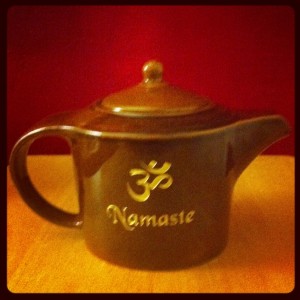The ancient healing science of Ayurveda provides multiple methods through which we can regain our health and restore balance to our lives. One method which is utilized to balance the doshas (body types) is the Ayurvedic daily routine. The Ayurvedic daily routine is transformative in assisting digestion, assimilation, and absorption. It brings the body and mind back into harmony with its inner nature.
 The Ayurvedic daily routine should be adjusted for each person’s current Ayurvedic vikrtuti, or state of imbalance. Depending on which dosha (Vata, Pitta, or Kapha) is most imbalanced, an Ayurvedic practitioner would customize your daily routine. For example, a person who has a Kapha imbalance would get up earlier than one with a Vata or Pitta imbalance. Kapha is more prone to lethargy, so they require greater motivation throughout the day. Mealtime should also vary according to each dosha. You can take a simple quiz to determine your current state of imbalance.
The Ayurvedic daily routine should be adjusted for each person’s current Ayurvedic vikrtuti, or state of imbalance. Depending on which dosha (Vata, Pitta, or Kapha) is most imbalanced, an Ayurvedic practitioner would customize your daily routine. For example, a person who has a Kapha imbalance would get up earlier than one with a Vata or Pitta imbalance. Kapha is more prone to lethargy, so they require greater motivation throughout the day. Mealtime should also vary according to each dosha. You can take a simple quiz to determine your current state of imbalance.
A customized Ayurvedic lifestyle plan would also provide specifics on what foods are best to nurture and balance each of the three doshas. Generally, Vata people should eat warm, nourishing food. Pitta types should favor cooling, unfried, and lightly spiced foods. Kapha people should favor light, and spicy foods, avoiding sweets and heavy food.
Another important aspect of an Ayurvedic daily routine is abhyanga or an oil massage. There are specific oils for each of the three doshic types. Vata people should utilize sesame oil for abhyanga, Pitta people should use sunflower or coconut oil, and Kapha types may utilize sesame, sunflower or almond oil for massage.
Yoga is a sister science to Ayurveda. There are a series of yoga poses which are pacifying for each of the doshic types. Different types of pranayama, or breathing exercises are suited for each Ayurvedic body type. Alternate nostril breathing may be done by all three types as part of their Ayurvedic daily routine.
Ayurveda also advises to do one thing at a time, and avoid multi-tasking. This is particularly difficult for people with Vata imbalances (who crave stimulation), and Pitta types (who want to achieve). The body can fall into disequilibrium when it has to perform multiple functions simultaneously. For example if a person is walking, and talking, and eating, the body has many functions to process together. This may result in malabsorption and poor digestion. There is also a lack of consciousness when full attention isn’t paid to what one is ingesting and how the food impacts one’s body and mind.
Another method by which to restore balance in Ayurveda is the use of herbs. There are herbs specific to each dosha, as well as certain diseases. The herbs have a synergistic effect, and a skilled Ayurvedic practitioner would prepare a mixture most suited to your doshic imbalance. Taking the herbs would become part of your Ayurvedic daily routine.
The above are some of the components to an Ayurvedic daily routine. After some time, these routines become habits and balance your doshas. Ayurveda empowers you to take charge of your health and participate in the healing process as changes unfold. A personalized Ayurvedic consultation is the first step to restoring harmony.